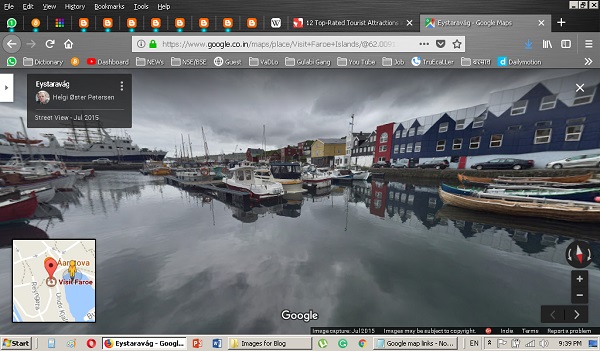The Little Mermaid is a bronze statue by Edvard Eriksen, depicting a mermaid. The sculpture is displayed on a rock by the waterside at the Langelinie promenade in Copenhagen, Denmark. It is 1.25 metres tall and weighs 175 kilograms.
Denmark (Danish: Danmark, pronounced [ˈdanmɑɡ] officially the Kingdom of Denmark, is a Nordic country and a sovereign state. The southernmost of the Scandinavian nations, it is south-west of Sweden and south of Norway, and bordered to the south by Germany.
Faroe Islands
The Kingdom of Denmark also comprises two autonomous constituent countries in the North Atlantic Ocean: the Faroe Islands and Greenland.
Cruise Information Center,Copenhagen,Denmark
Denmark proper consists of a peninsula, Jutland, and an archipelago of 443 named islands, with the largest being Zealand, Funen and the North Jutlandic Island. The islands are characterized by flat, arable land and sandy coasts, low elevation and a temperate climate.
The Øresund or Öresund Bridge (Danish: Øresundsbroen, pronounced [ˈøɐsɔnsˌbʁoˀːn̩]; Swedish: Öresundsbron, pronounced [œːrɛ²sɵnːdsˌbruːn]; hybrid name: Øresundsbron) is a combined railway and motorway bridge across the Øresund strait between Sweden and Denmark. The bridge runs nearly 8 kilometres (5 miles) from the Swedish coast to the artificial island Peberholm in the middle of the strait. The crossing is completed by the 4-kilometre (2.5 mi) Drogden Tunnel from Peberholm to the Danish island of Amager. The Øresund Bridge is the longest combined road and rail bridge in Europe and connects two major metropolitan areas: Copenhagen, the Danish capital city, and the Swedish city of Malmö
Denmark has a total area of 42,924 km2 (16,573 sq mi), land area of 42,394 km2 (16,368 sq mi), and the total area including Greenland and the Faroe Islands is 2,210,579 km2 (853,509 sq mi), and a population of 5,781,190 (as of 2018).
The unified kingdom of Denmark emerged in the 10th century as a proficient seafaring nation in the struggle for control of the Baltic Sea Denmark, Sweden and Norway were ruled together as one realm under the Kalmar Union, established in 1397 and ending with Swedish secession in 1523.
The areas of Denmark and Norway remained under the same monarch until 1814, often referred to as the Dano-Norwegian Realm, or simply Denmark-Norway. After the Napoleonic Wars, Norway was ceded to Sweden, while Denmark kept the Faroe Islands, Greenland and Iceland. Beginning in the 17th century, there were several devastating wars with the Swedish Empire, ending with large cessions of territory to Sweden.

Rosenborg Castle Stautes...

Rosenborg Castle Stautes...
In the 19th century there was a surge of nationalist movements, which were defeated in the 1864 Second Schleswig War. Denmark remained neutral during World War I. In April 1940, a German invasion saw brief military skirmishes while the Danish resistance movement was active from 1943 until the German surrender in May 1945.
An industrialized exporter of agricultural produce in the second half of the 19th century, Denmark introduced social and labor-market reforms in the early 20th century that created the basis for the present welfare state model with a highly developed mixed economy...[https://en.wikipedia.org/wiki/Denmark]
 |
The palace is thus home to the three supreme powers: the executive power, the legislative power, and the judicial power.It is the only building in the world that houses all three of a country's branches of government. The name Christiansborg is thus also frequently used as a metonym for the Danish political system, and colloquially it is often referred to as Rigsborgen ('castle of the realm') or simply Borgen |









कोई टिप्पणी नहीं:
एक टिप्पणी भेजें